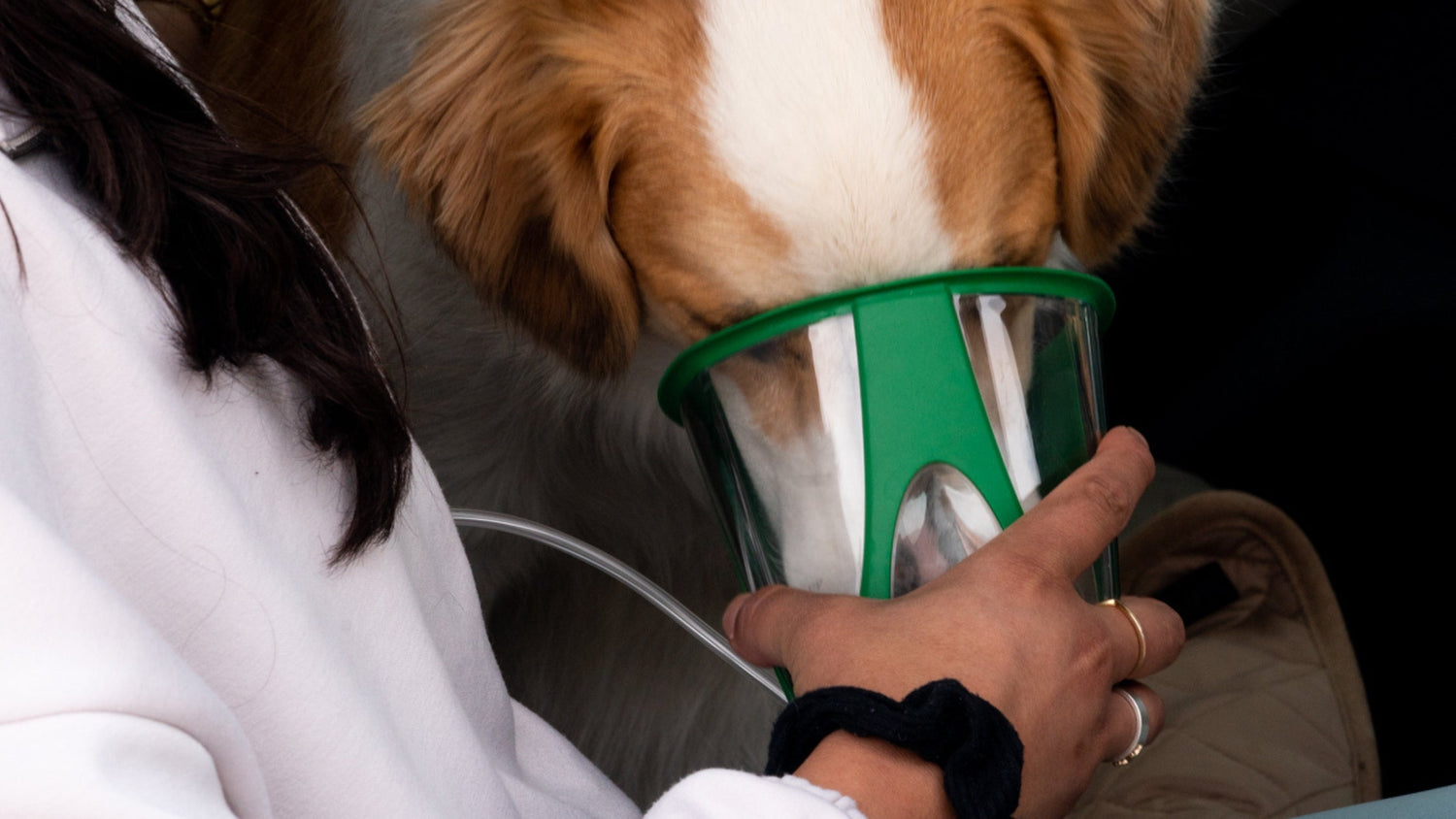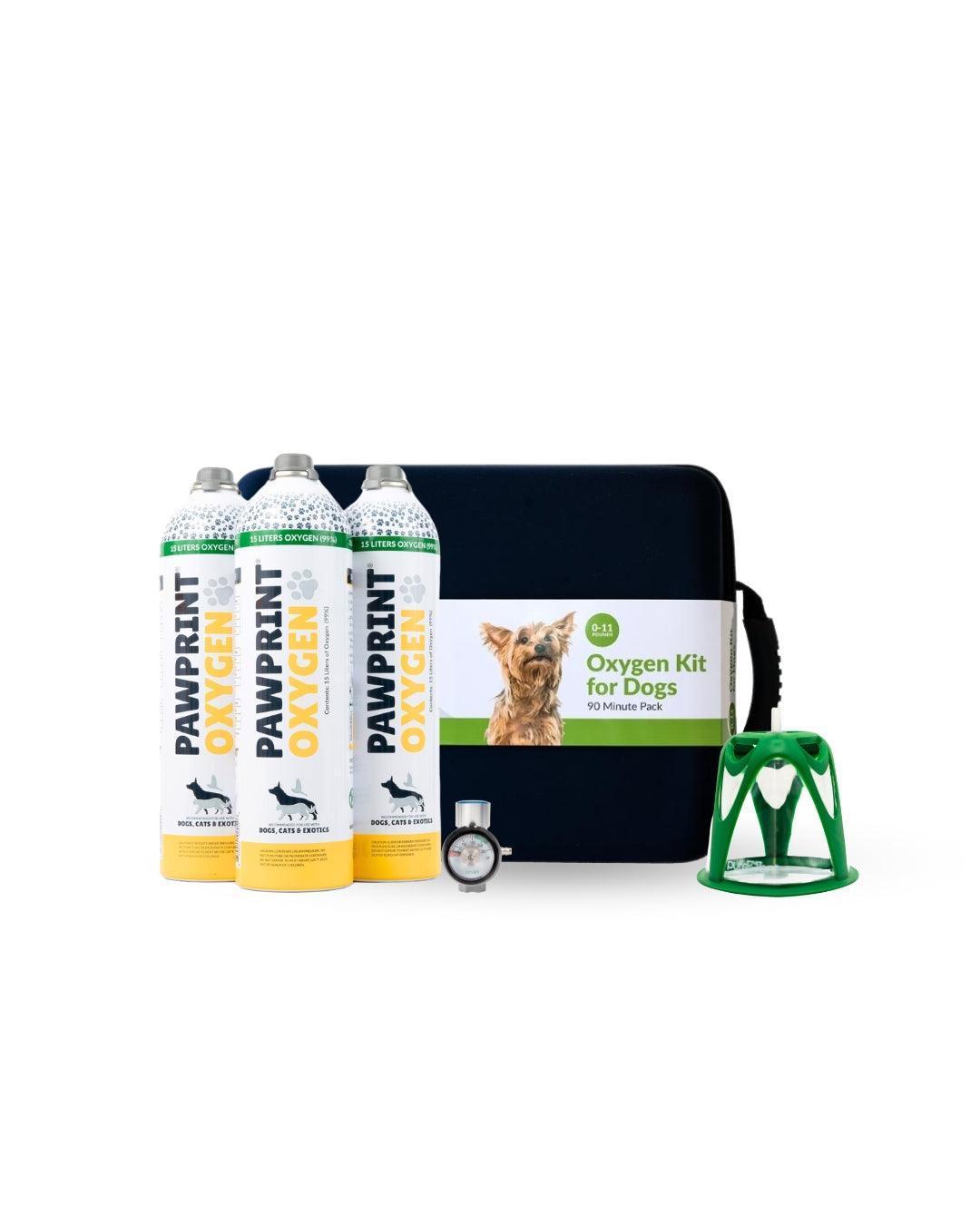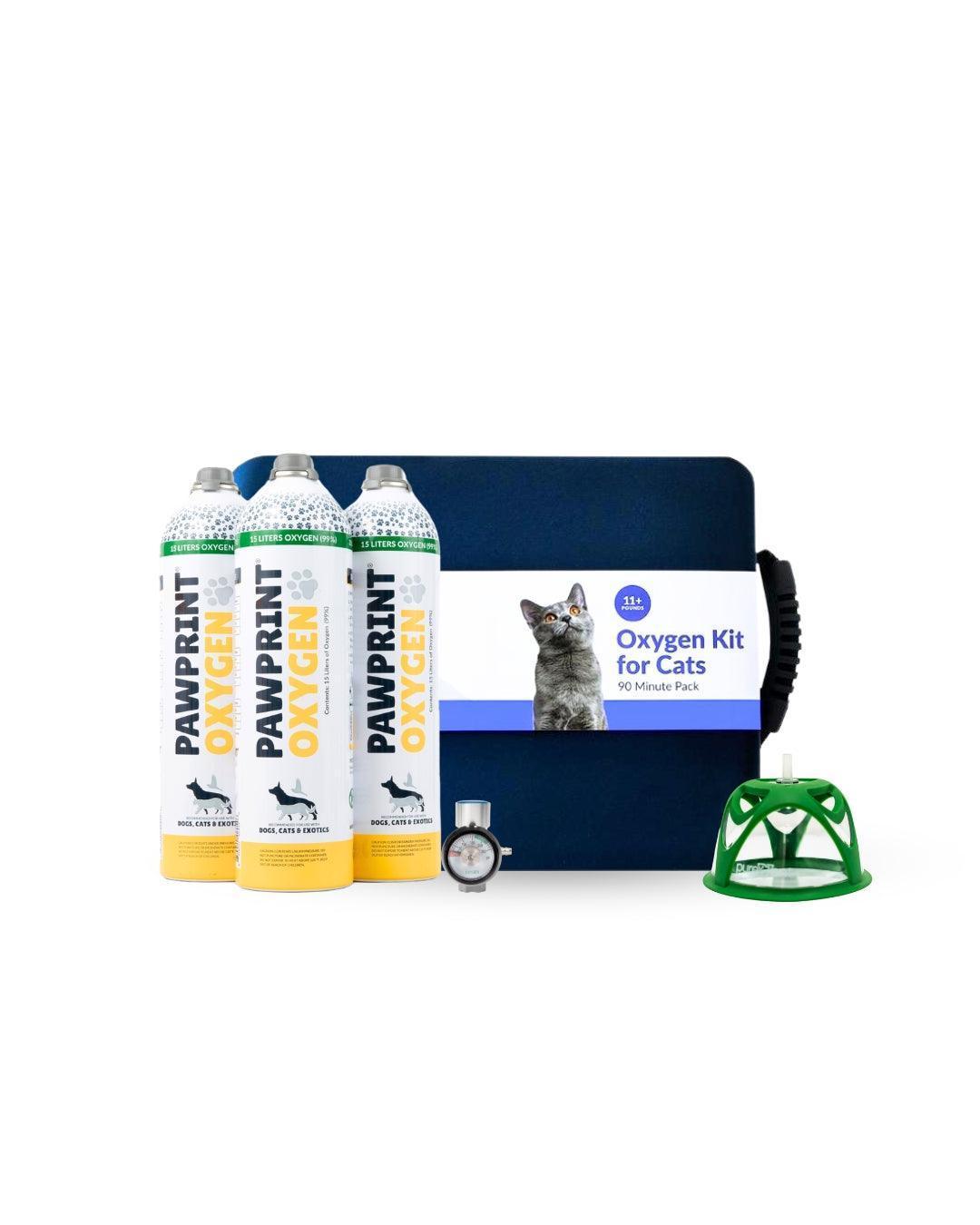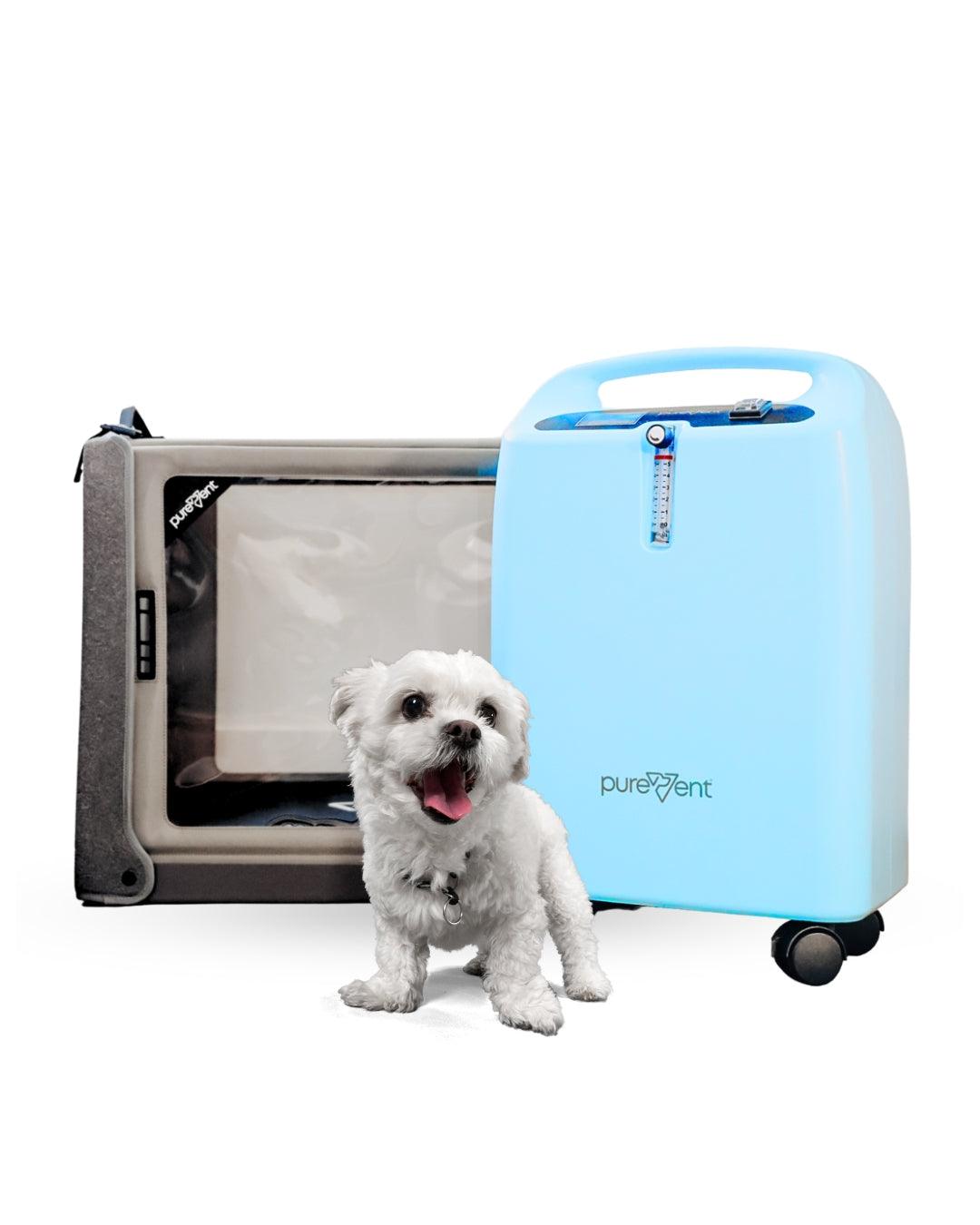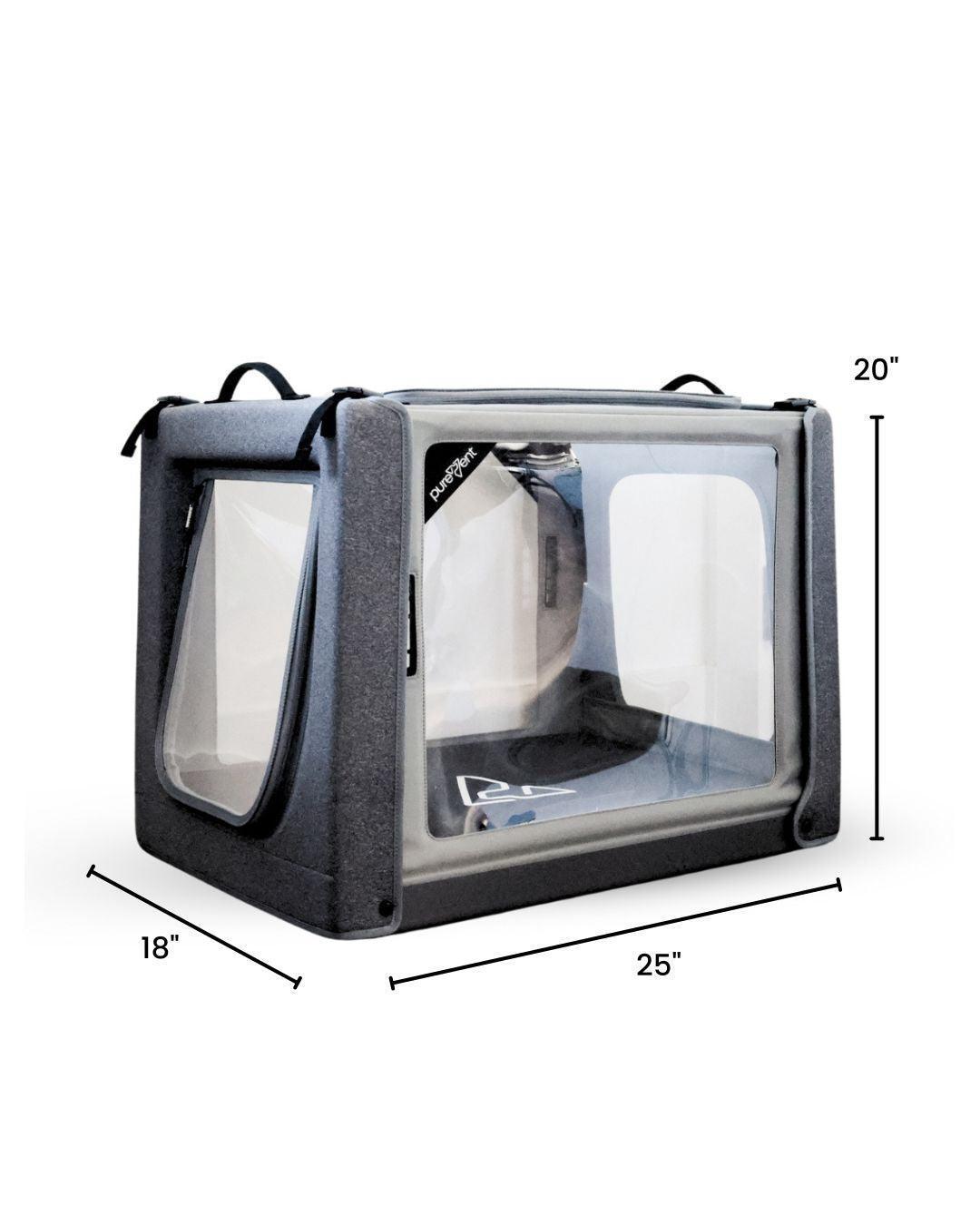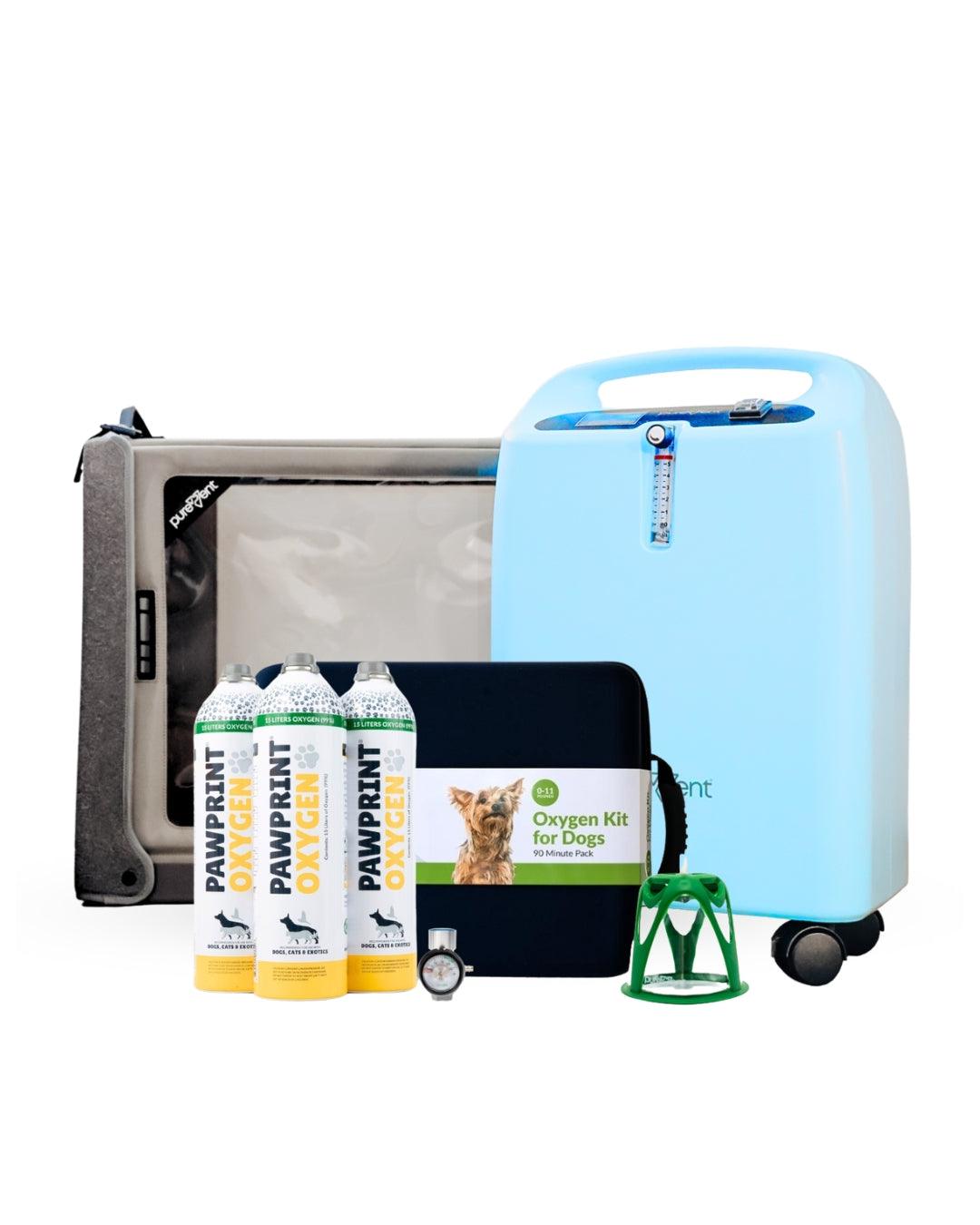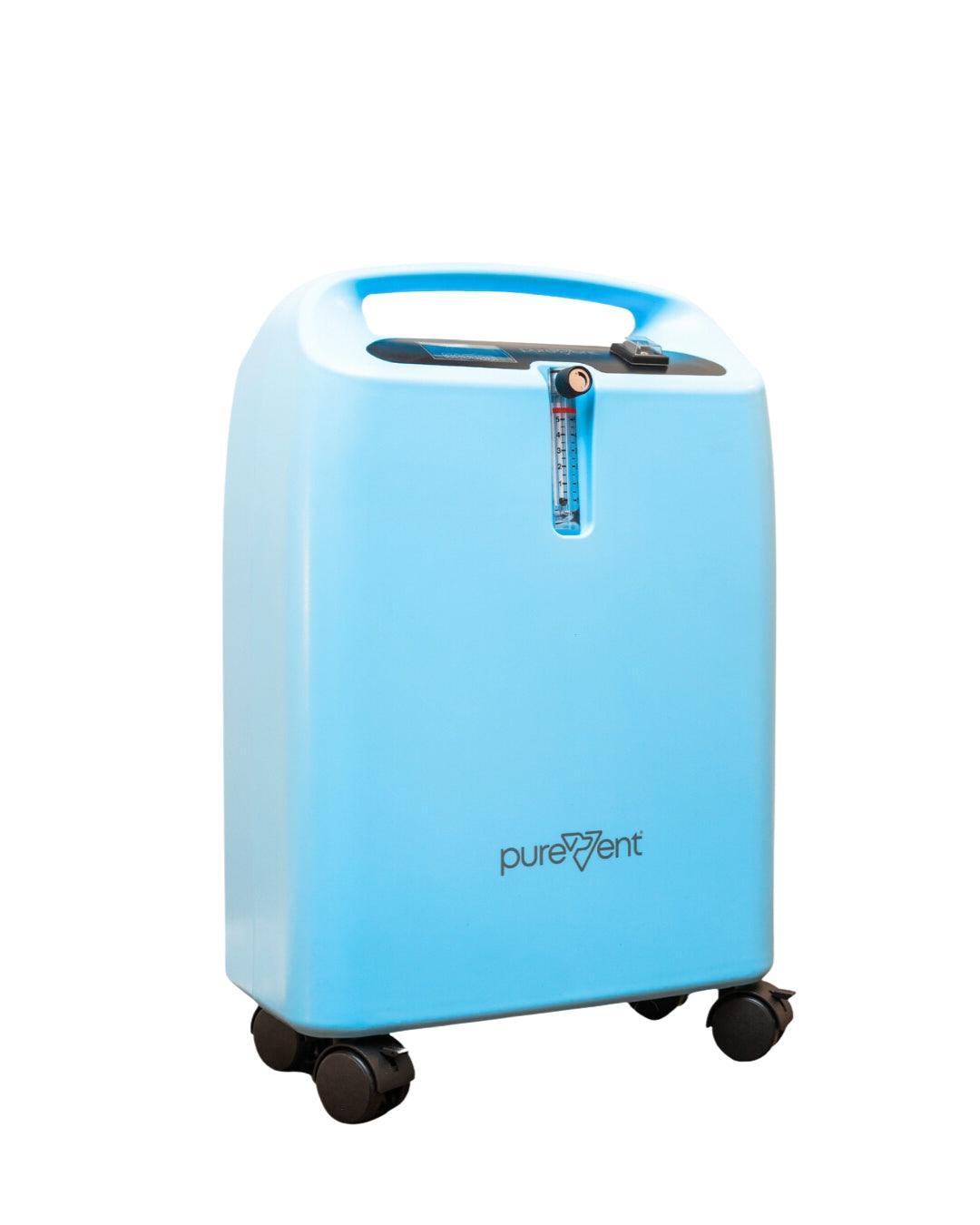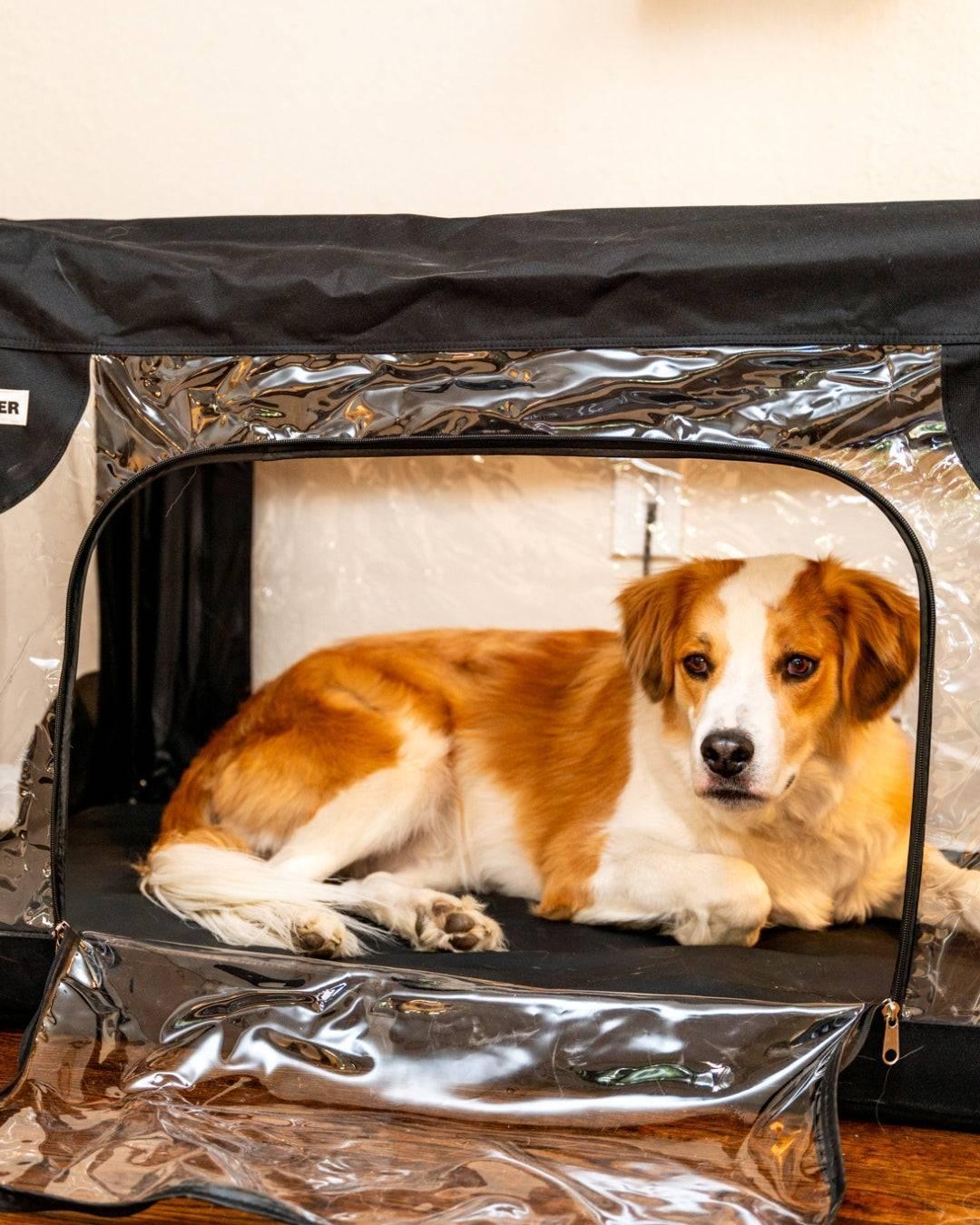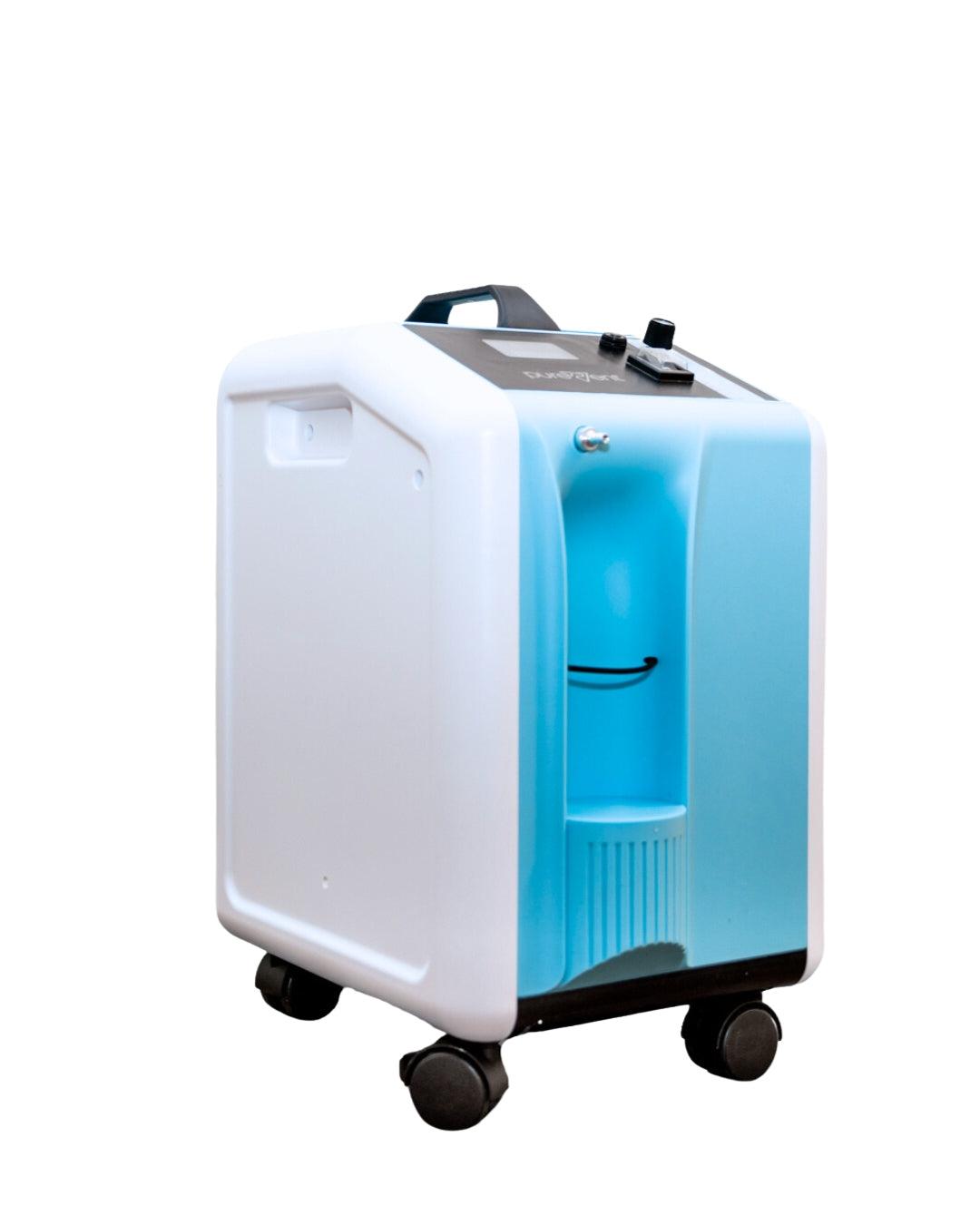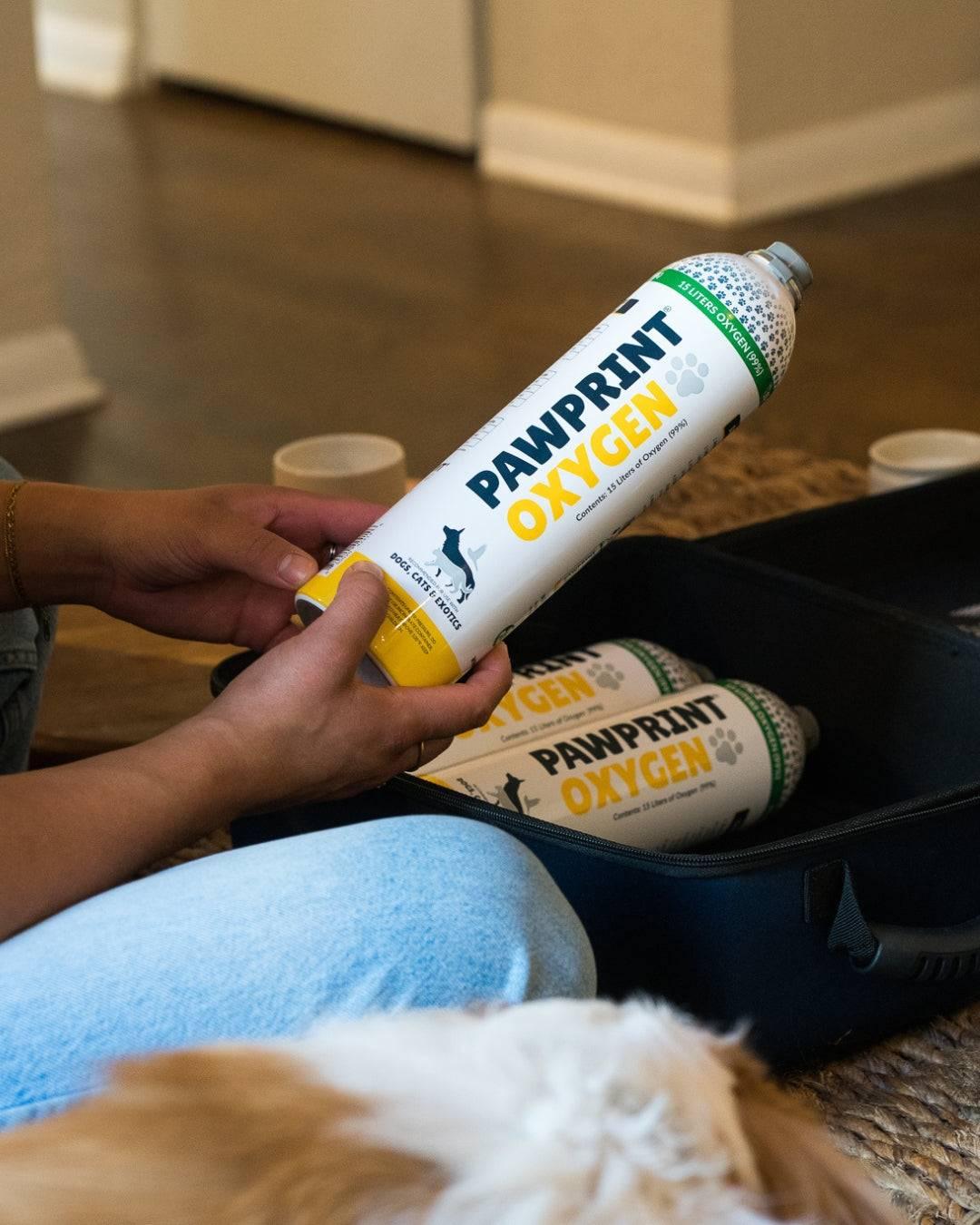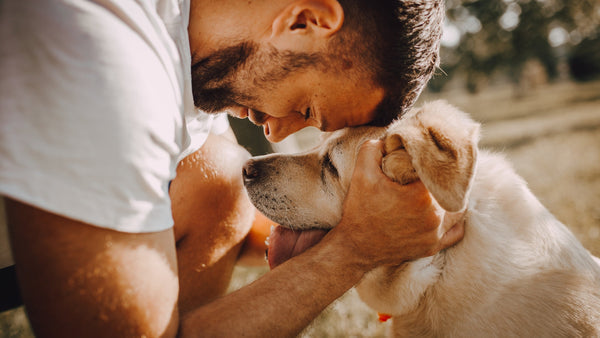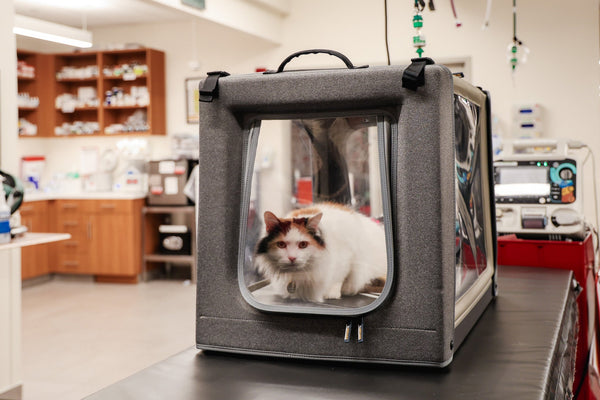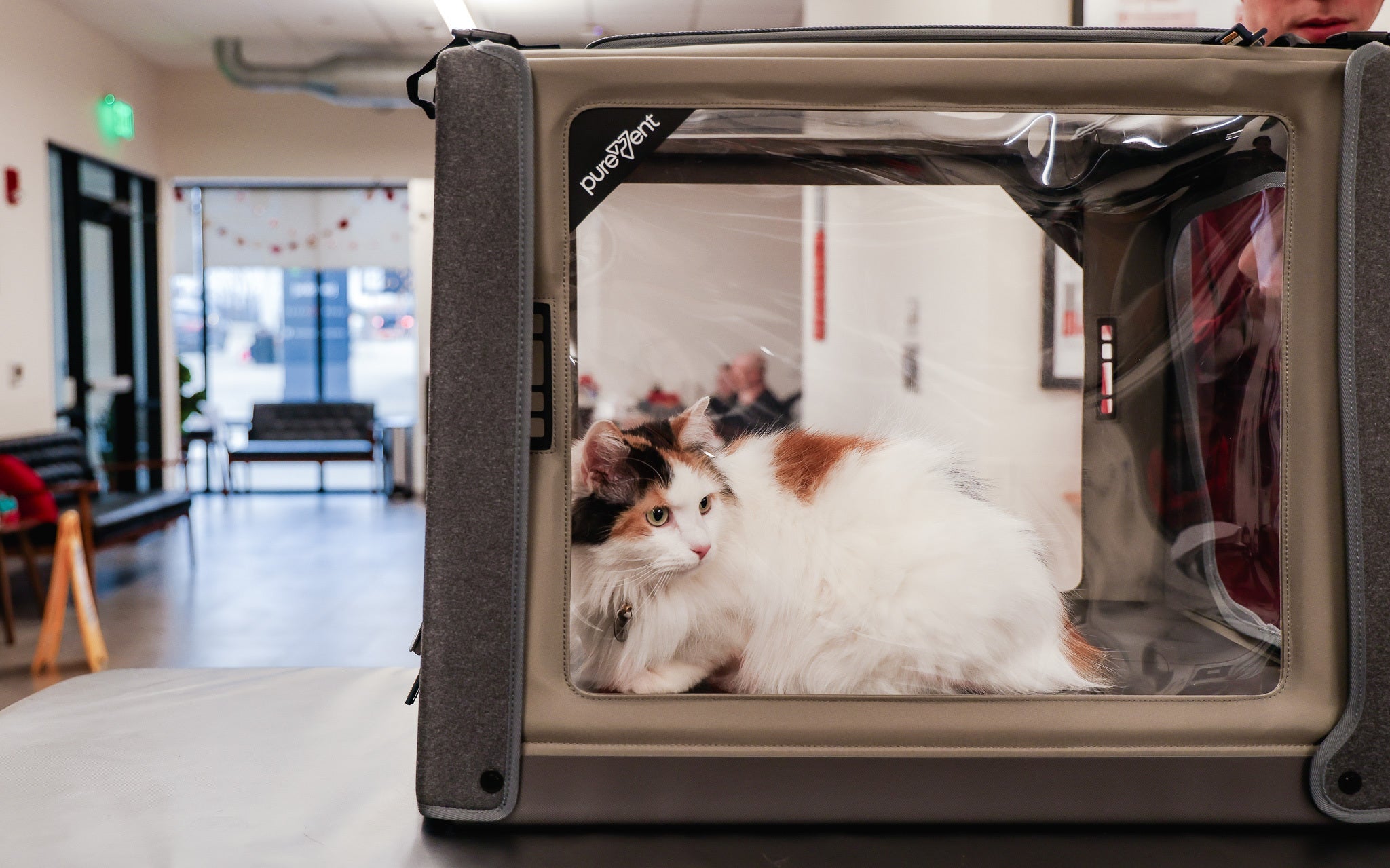Congestive heart failure (CHF) is a serious condition that affects many dogs, particularly as they age. This condition occurs when the heart is unable to pump blood effectively, leading to a buildup of fluid in the lungs and other organs. As a result, dogs with CHF often struggle with breathing difficulties, lethargy, and other related symptoms that can significantly impact their quality of life.
Oxygen therapy is a crucial supportive treatment for dogs with CHF, providing much-needed relief. By increasing the amount of oxygen available to your dog, oxygen therapy can help ease their breathing, reduce stress on the heart, and improve overall well-being, especially during acute episodes of heart failure.
The purpose of this article is to guide owners on the effective use of oxygen therapy for managing congestive heart failure symptoms. Whether you are considering oxygen therapy for the first time or looking to optimize its use for your dog, this comprehensive guide will provide you with the knowledge and tools you need to ensure your pet receives the best care possible.
Table of Contents

Oxygen Therapy And It's Role For Dog's With Congestive Heart Failure
Oxygen therapy is a medical treatment that involves providing supplemental oxygen to your dog to improve their oxygen levels. In dogs with congestive heart failure, the heart’s reduced ability to pump blood efficiently can lead to inadequate oxygenation of tissues. The lack of oxygen can exacerbate the symptoms of CHF, leading to increased difficulty in breathing, fatigue, and other complications.
The primary purpose of oxygen therapy is to increase the concentration of oxygen in your dog’s bloodstream, which can help ease the strain on their heart and lungs. By ensuring that your dog receives a higher concentration of oxygen, this therapy supports better organ function and helps mitigate the symptoms associated with CHF. Adding oxygen therapy to your dog's toolkit can make a significant difference to your dog’s comfort and quality of life, especially during periods of acute distress.
Signs That Your Dog May Need Oxygen Therapy
Recognizing the signs that your dog may need oxygen therapy is crucial for timely intervention. Dogs with CHF often exhibit a range of symptoms that indicate their body is not receiving enough oxygen. These symptoms can vary in severity, but they commonly include:
Difficulty Breathing: One of the most noticeable signs is labored or rapid breathing, which may occur even when your dog is at rest. You might also observe your dog breathing with their mouth open or using their abdominal muscles to help them breathe.
Cyanosis: This is a bluish or grayish tint to the gums, tongue, or other mucous membranes, indicating that your dog’s blood oxygen levels are dangerously low. Cyanosis is a serious sign that requires immediate attention.
Lethargy and Weakness: Dogs with congestive heart failure may tire easily and show reluctance to engage in physical activity. This fatigue occurs because their body is working harder to distribute oxygen to vital organs.
Coughing: Persistent coughing, especially at night or after exercise, can be a sign that fluid is accumulating in the lungs due to CHF, making it harder for your dog to breathe.
Restlessness or Anxiety: If your dog seems unusually restless, paces frequently, or exhibits signs of anxiety, it could be due to the discomfort of not being able to breathe properly.
If you notice any of these symptoms, it’s essential to consult your veterinarian immediately. They can assess your dog’s condition and determine whether oxygen therapy is necessary. Early intervention with oxygen therapy can help stabilize your dog’s condition and prevent further complications, making it a vital component of managing congestive heart failure in dogs.
The Benefits of Adding Oxygen Therapy to a Treatment Plan for Your Dog with Congestive Heart Failure
Incorporating oxygen therapy into the treatment plan for your dog diagnosed with CHF can significantly improve their quality of life. Oxygen therapy delivers a higher concentration of oxygen than is typically available in ambient air, which helps alleviate the symptoms of congestive heart failure, particularly when the dog's ability to oxygenate their blood is compromised.
Improved Oxygenation: Dogs with congestive heart failure often suffer from reduced oxygen levels due to fluid accumulation in the lungs, making it difficult for them to breathe and causing fatigue or distress. Oxygen therapy provides immediate relief by increasing the oxygen's saturation that they are breathing in, which helps to stabilize the dog’s breathing and improve tissue oxygenation.
Alleviates Respiratory Distress: Dogs experiencing acute respiratory distress due to CHF can benefit from supplemental oxygen to ease breathing difficulties, reduce the risk of hypoxia, and support their overall cardiac function. By enhancing the oxygen supply, the dog's heart doesn’t have to work as hard to distribute oxygen-rich blood, which reduces stress on the heart.
Supports Recovery During Crises: Oxygen therapy is particularly valuable during acute CHF episodes, where dogs may experience severe breathing issues or cyanosis (bluish gums and tongue due to lack of oxygen). Administering oxygen can stabilize your dog quickly while allowing other treatments, such as diuretics or vasodilators, to take effect.
Enhances the Effectiveness of Medications: By increasing the oxygen available in the body, oxygen therapy can improve the efficacy of congestive heart failure medications. Medications such as diuretics and ACE inhibitors help manage fluid buildup and blood pressure, but without adequate oxygen, the heart and other organs may still be strained. Supplemental oxygen helps these medications work more effectively.
Comfort and Quality of Life: Chronic CHF episodes can lead to persistent discomfort and fatigue, making it hard for dogs to engage in normal activities. Oxygen therapy can enhance their comfort levels by helping them breathe easier, reducing anxiety associated with labored breathing, and enabling them to enjoy time with their families without distress.
Overall, oxygen therapy plays a crucial role in supporting dogs with congestive heart failure, helping to manage both acute episodes and long-term symptoms while improving their overall quality of life.
Methods of Administering Oxygen Therapy
At-Home Oxygen Concentrator and Chamber
Description of the Setup:
An at- home oxygen concentrator is a device that extracts oxygen from the surrounding air and delivers it at higher concentrations. This oxygen can be administered to your dog through an oxygen chamber or a pet oxygen mask. An oxygen chamber is an enclosed space designed to contain oxygen-rich air. The chamber is a well-ventilated structure where your dog can lie comfortably while receiving the therapy. A pet oxygen mask may be used, as well, which fits over your dog’s muzzle and delivers the oxygen.
How It Works:
The oxygen concentrator continuously draws in air from the environment, filters out nitrogen and other gases, and produces concentrated oxygen, which is then pumped into the oxygen chamber or pet oxygen mask. Your dog breathes this enriched air, which increases the oxygen levels in their bloodstream. Both the oxygen chamber and pet oxygen mask ensure that the oxygen is delivered in a controlled and consistent manner, creating an environment that is both calming and effective for your dog’s needs.
Advantages of Using an Oxygen Concentrator:
- Consistent Oxygen Delivery: A medical-grade oxygen concentrator provides a steady flow of oxygen, making it ideal for long-term therapy.
- Comfortable Environment: The enclosed chamber allows your dog to relax in a stress-free setting, reducing anxiety and making the therapy more effective.
- Customizable Settings: Many oxygen concentrators allow you to adjust the oxygen flow rate, ensuring your dog receives the appropriate amount of oxygen based on the administration method and the dog’s condition.
Is congestive heart failure more prevalent in certain dog breeds?
Yes, congestive heart failure (CHF) is more prevalent in certain dog breeds due to genetic predispositions and breed-specific health concerns.
Dog breeds that may be predisposed to CHF:
- Cavalier King Charles Spaniel
- Miniature and Toy Poodles
- Dachshund
- Doberman Pinscher
- Great Dane
- Boxer
- Irish Wolfhound
- Cocker Spaniel
What foods should I avoid feeding my dog with CHF?
If your dog has congestive heart failure, avoid feeding foods high in sodium, as excess salt can lead to fluid retention and worsen heart strain. This includes processed treats, deli meats, cheese, canned foods with added salt, and table scraps like chips or fast food . Also, steer clear of high-fat foods that may contribute to obesity, putting additional stress on the heart. Certain commercial dog foods may contain excessive sodium, so opt for low-sodium, heart-healthy diets recommended by your vet. Additionally, some dogs with CHF may require taurine and L-carnitine supplementation, so avoid grain-free diets linked to taurine deficiency-associated dilated cardiomyopathy (DCM) unless specifically advised by your veterinarian.
Can CHF go away on its own, or is it permanent?
Congestive heart failure does not go away on its own and is generally a progressive, lifelong condition. While it cannot be cured, early diagnosis and proper management with medications, dietary adjustments, supplemental oxygen therapy, and lifestyle changes can slow its progression and improve your dog's quality of life.
Treatment for CHF typically includes diuretics to reduce fluid buildup, ACE inhibitors to ease heart strain, and supportive therapies like oxygen or taurine supplementation if needed. Regular veterinary check-ups are essential to monitor heart function and adjust treatment and diet as needed. While CHF is permanent, proactive care can help your dog live a longer, more comfortable life.
Disadvantages of Using an Oxygen Concentrator:
- Limited Mobility: The concentrator setup is stationary since the unit needs to be plugged into a home outlet, which means your dog will need to remain in the home during therapy, potentially limiting their movement.
- Initial Cost: Purchasing an oxygen concentrator and chamber or mask can be an investment, though it may be a worthwhile for dogs requiring ongoing therapy.
- Noise: Some oxygen concentrators can be noisy, which might be unsettling for some dogs.
Portable Oxygen Canisters and Pet Oxygen Masks
How to Use a Portable Oxygen Canister and Mask:
Portable oxygen canisters are small and lightweight. They are used in conjunction with a pet oxygen mask, which fits snugly over your dog’s nose and mouth. To administer oxygen therapy using this method, attach the mask to the pre-set flow rate regulator, twist the regulator onto the canister, and gently place the mask over your dog’s mouth and nose. Ensure that the mask fits well to maximize the effectiveness of therapy.
Situations Where a Portable Oxygen Source Is Most Effective:
Portable oxygen canisters and masks are particularly useful in emergency situations or when you’re away from home. They provide a quick and accessible way to deliver oxygen to your dog when they’re experiencing a sudden episode of respiratory distress. This method is also ideal for short-term use during transport to the veterinarian or when your dog is too anxious to remain in an oxygen chamber.
Advantages of Using Portable Oxygen Canisters:
- Mobility: The portability of the oxygen canisters allows you to administer oxygen therapy anywhere, providing flexibility in managing your dog’s congestive heart failure symptoms.
- Quick Access: In emergencies, a portable canister can be crucial, offering immediate relief from breathing distress.
- Ease of Use: The setup is simple to use, making it easy for pet owners to administer oxygen therapy with no training.
Disadvantages of Using Portable Oxygen Canisters:
- Limited Oxygen Supply: Unlike an oxygen concentrator, canisters have a finite amount of oxygen and will need to be replaced when empty.
- Short-Term Use: Portable oxygen canisters are typically designed for short-term or emergency use, not for continuous therapy.
- Potential Discomfort: Some dogs may find the mask uncomfortable or may resist having it placed on their face, which can make therapy challenging.
Each method of administering oxygen therapy has its own set of benefits and limitations. The best option for your dog will depend on their specific needs, the severity of their congestive heart failure symptoms, and your lifestyle. Working closely with your veterinarian will help you determine the most effective approach to ensure your dog receives the oxygen they need to manage their condition.

How to Set Up Oxygen Therapy at Home For Your Dog With Congestive Heart Failure
Equipment Needed
To effectively administer oxygen therapy to your dog at home and on the go, you’ll need to gather the following equipment:
-
Oxygen Concentrator:
A device that extracts and concentrates oxygen from room air, providing a continuous supply of oxygen for your dog. This is ideal for long-term or ongoing therapy. -
Oxygen Chamber:
An enclosed space where your dog can rest while receiving oxygen therapy. The chamber is designed to contain oxygen-rich air, ensuring consistent delivery during the therapy session. - Portable Oxygen Canisters: Lightweight, portable canisters filled with compressed oxygen, suitable for emergencies or short-term use when you’re on the go.
-
Pet Oxygen Mask and Regulator:
A specially designed mask and pre-set flow regulator that works with the portable oxygen canisters. The mask fits over your dog’s nose and mouth, allowing direct delivery of oxygen from either a concentrator or a portable canister.
Where to Obtain Medical-Grade Oxygen Therapy Supplies:
Oxygen therapy equipment can be obtained through your veterinarian, medical supply stores, or specialized pet health suppliers. Pawprint Oxygen offers a range of products specifically designed for pets, including portable oxygen kits, concentrators, oxygen chambers, and pet oxygen masks. Working with a reputable supplier ensures you receive high-quality, medical-grade equipment tailored to your dog’s needs.
Safety Precautions
When setting up and using oxygen therapy equipment at home, it’s essential to follow these safety precautions:
- Proper Storage: Store oxygen canisters and other oxygen equipment in a cool, dry place when not in use.
- Regular Maintenance: Follow the manufacturer’s instructions for maintaining your oxygen concentrator, including changing filters and checking connections regularly. Ensure that all equipment is clean and functioning correctly before each use.
- Emergency Preparedness: Have an emergency plan in place, including keeping your veterinarian’s contact information readily accessible in case of any complications.
Step-by-Step Guides For Oxygen Set Up
Setting Up an Oxygen Concentrator and Chamber:
-
Choose a Location:
Place the oxygen concentrator in a quiet area of your home near where your dog will receive therapy. -
Connect the Oxygen Tubing:
Attach the tubing from the concentrator to the oxygen chamber, ensuring all connections are secure. -
Set Up the Oxygen Chamber:
Ensure the chamber is comfortably arranged with your dog’s bedding and favorite toys to reduce stress during therapy. -
Adjust the Flow Rate:
Set the flow meter to the rate prescribed by your veterinarian or by the manufacturer. -
Turn On the Concentrator:
Start the oxygen concentrator and allow the chamber to pre-fill with oxygen-rich air for 15 minutes prior to placing your dog in the chamber. -
Place Your Dog in the Chamber:
Gently place your dog inside the oxygen chamber, ensuring they are calm and comfortable. Monitor your dog for signs of relaxation and improved breathing.
Using a Portable Oxygen Canister and Mask:
-
Prepare the Canister:
Ensure the oxygen canister is full by attaching the regulator briefly. -
Attach the Mask:
Connect the pet oxygen mask to the regulator with the included oxygen tubing. -
Start the Flow of Oxygen:
When ready to initiate therapy, place the regulator on top of the canister and twist clockwise to start the flow of oxygen. -
Administer Oxygen:
Gently place the mask over your dog’s nose and mouth, ensuring a comfortable fit. Hold the mask in place and reassure your dog to keep them calm. -
Monitor Your Dog:
Watch your dog for signs of improved breathing. If your dog resists the mask, try offering gentle encouragement, treats, or take short breaks to avoid causing stress.

Monitoring Your Dog With Congestive Heart Failure For Signs Of Improvement
After initiating oxygen therapy for your dog with congestive heart failure, it’s important to monitor for signs that the treatment is effective. Key indicators that the oxygen therapy is working include:
-
Improved Breathing:
One of the most immediate signs of effective oxygen therapy is a noticeable improvement in your dog’s breathing. You should see a reduction in labored breathing or panting, and your dog’s breathing rate may return to a more normal pace. -
Increased Energy Levels:
As your dog’s oxygen levels stabilize, you may notice an increase in their energy and activity levels. They might become more interested in their surroundings and more willing to engage in physical activities that were previously exhausting. -
Better Coloration of Gums and Tongue:
If your dog had cyanosis (bluish or grayish gums and tongue) before starting oxygen therapy, you should see an improvement in the color of these tissues as their oxygen levels increase. Healthy gums are typically light to bubblegum pink in color. -
Reduced Anxiety:
Dogs struggling to breathe often become anxious or restless. Effective oxygen therapy can help calm your dog, as they no longer need to struggle for each breath, leading to a more relaxed demeanor.
A Path to Comfortable Living For A Dog With Congestive Heart Failure
Oxygen therapy is vital for managing congestive heart failure in dogs. It eases breathing, reduces heart strain, and improves the dog's overall well-being. This guide covered signs indicating the need for oxygen therapy, benefits of adding oxygen therapy to your dog’s treatment plan, administration methods, and home setup. We emphasized integrating oxygen therapy with other treatments like medications and dietary changes for comprehensive congestive heart failure management.
Effective CHF management requires close collaboration with your veterinarian. Regular check-ups help monitor progress, adjust treatments, and address issues promptly. Your vet will tailor oxygen therapy to your dog's needs, ensuring proper flow rates and delivery methods. Consistent care enhances therapy effectiveness and provides support throughout treatment.
With proper management, many dogs with congestive heart failure can maintain a good quality of life. Oxygen therapy, when integrated into daily routines, significantly improves symptoms and overall health. Remember that each dog's needs are unique and may change over time. Stay flexible, celebrate small victories, and focus on your dog's well-being as you navigate congestive heart failure challenges. With dedication and care, you can help your pet live comfortably despite their condition.

